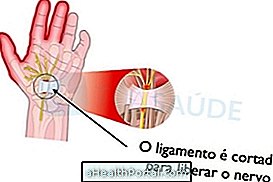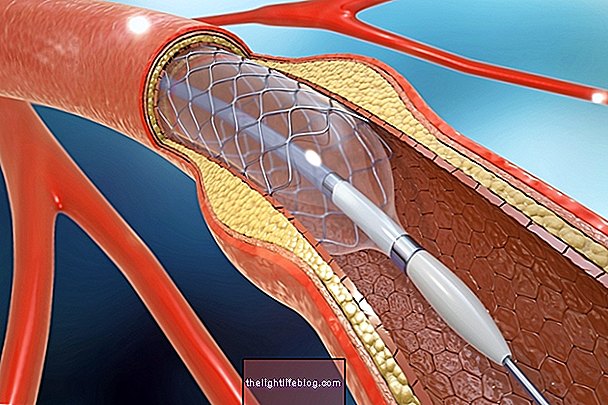Ankle sprains usually happen when a person 'walks falsely' by turning his foot out on uneven ground or on a step. This is more common in women who are wearing high heels, but it can also happen while running, for example.
Usually there is pain and the foot becomes swollen in the first few days, having difficulty walking, but in most cases, just put a cold compress and stand with your feet higher than the body to control these symptoms and feel better.
The ankle twist can be 3 different degrees:
- Grade 1: ligament stretching, usually pain passes in less than 5 days;
- Grade 2: partial ligament injury, pain may last more than 10 days and physical therapy is indicated;
- Grade 3: total ligament injury, it is always necessary to do physiotherapy.
Second-degree lesions take at least 15 days to heal, while 3rd-degree lesions take about 1 month.
A good way to find out when there is a grade 3 injury is to perform the previous drawer test. To do this simply lie on your belly up and bend your leg. Another person should position the hands behind the person's knee and try to bring the leg forward. In case of ankle pain this indicates severe injury to the ankle ligaments.
Symptoms of ankle sprain


Symptoms of an ankle twist may include:
- Ankle pain and difficulty walking or even putting your foot on the floor;
- Swelling of the side of the foot;
- The area may become swollen and purplish, it is common for the purple to appear only 48 hours after the twisting;
- Sensitivity when touching the lateral region of the ankle and foot;
- There may be slight rise in temperature at the affected site.
Usually the person himself knows that he twisted his foot while walking or running, but the doctor may request an x-ray of the foot if there is a fracture or MRI to suspect a rupture of the ligaments, if symptoms persist for more than 3 months.
Treatment for ankle twisting
Putting an ice pack on the ankle while resting sitting or lying down, but with elevated feet is a good way to combat pain and relieve swelling. In milder lesions this is sufficient to control the symptoms in 3 to 5 days.
Here are some ways to treat ankle sprain at home.
Physical therapy is recommended when the person has a lot of difficulty walking, which indicates that the ligaments that bind the bones of the foot have stretched or ruptured. In the physiotherapy can be used devices that help to deflate the region, but also stretching exercises, and after muscle strengthening, are recommended to avoid a new sprain.
Applying an anti-inflammatory ointment containing diclofenac is a good way to relieve pain and discomfort. You can pass the ointment 3 to 4 times a day.
In some cases it may be necessary to immobilize the foot by placing a splint or plaster for a few days and during this period you should use crutches to walk. The physiotherapist may also use a tape of kinesio tape to protect the ankle by preventing the foot from turning out excessively.
In addition, the physiotherapist or orthopaedist can indicate the use of an insole to use inside the shoes to correct the way the person steps and to help in the formation of the plantar arch, avoiding the flat foot, for example.
























